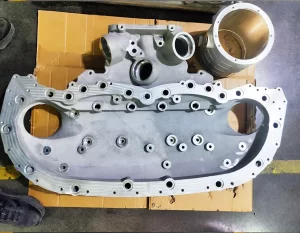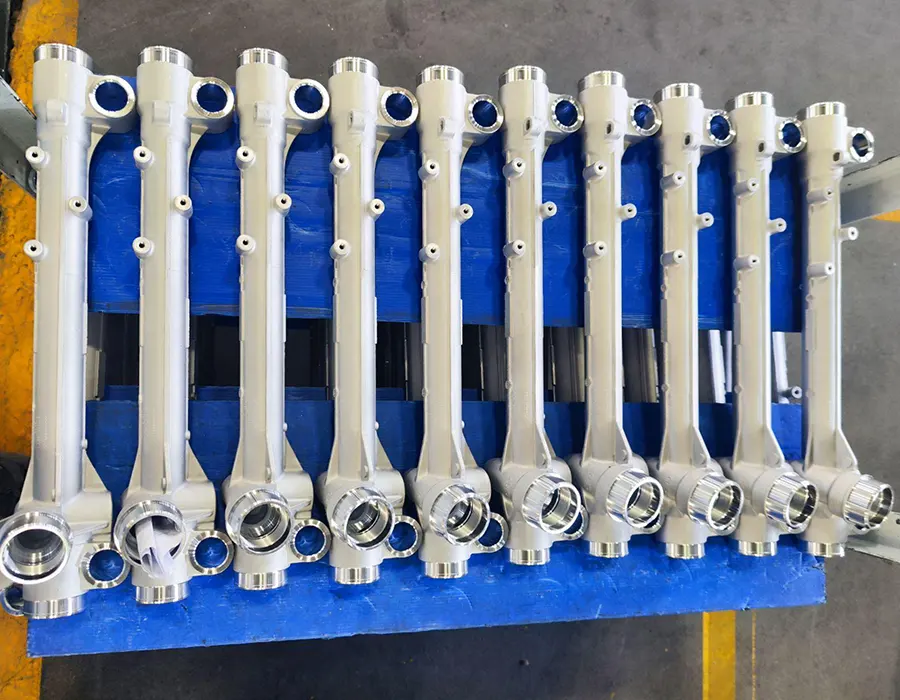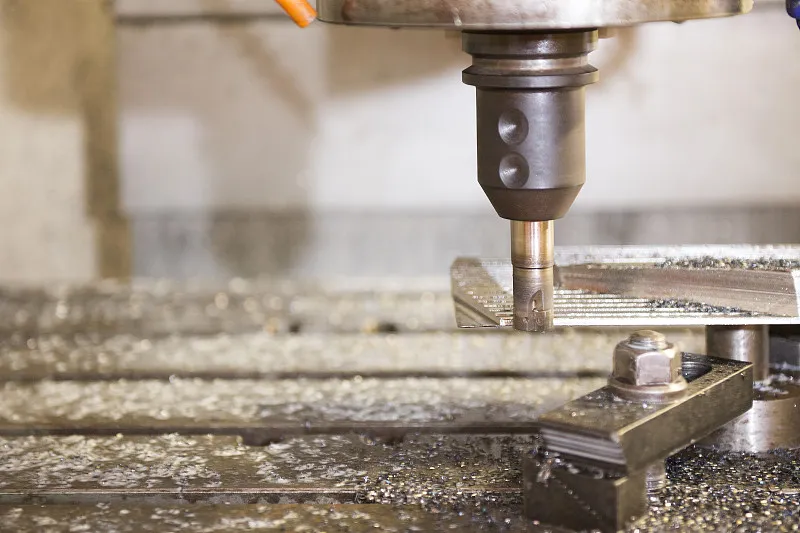Introduction
Aluminum alloys are foundational materials in modern engineering, prized for their combination of low density, high strength-to-weight ratios, corrosion resistance, and versatile machinability. Among the myriad of available aluminum alloys, 6061 and 7075 are two of the most widely used in structural and mechanical applications.
Choosing between these alloys is not trivial. Each offers distinct advantages depending on the intended application, performance requirements, and environmental conditions. This article compares 6061 and 7075 aluminum alloys, offering engineers critical insights into their chemical makeup, mechanical performance, and ideal use cases.

Chemical Composition
Understanding the elemental makeup of an alloy is key to predicting its mechanical and corrosion behavior.
6061 Aluminum (6XXX Series)
Primary alloying elements: Magnesium (Mg) and Silicon (Si)
Magnesium enhances strength and strain hardening
Silicon improves castability and strength-to-weight ratio
Chromium (trace amounts) boosts corrosion resistance and reduces grain boundary corrosion
7075 Aluminum (7XXX Series)
Primary alloying elements: Zinc (Zn) and Copper (Cu)
Zinc significantly increases tensile strength
Copper enhances strength but lowers corrosion resistance
Magnesium content is higher than in 6061, improving overall strength
Comparative Chemical Composition (% by weight)
| Element | 6061 | 7075 |
|---|---|---|
| Aluminum (Al) | Balance | Balance |
| Zinc (Zn) | ≤ 0.25 | 5.1 – 6.1 |
| Magnesium (Mg) | 0.8 – 1.2 | 2.1 – 2.9 |
| Silicon (Si) | 0.4 – 0.8 | ≤ 0.4 |
| Copper (Cu) | 0.15 – 0.4 | 1.2 – 2.0 |
| Chromium (Cr) | 0.04 – 0.35 | 0.18 – 0.28 |
| Iron (Fe) | ≤ 0.7 | ≤ 0.5 |
| Manganese (Mn) | ≤ 0.15 | ≤ 0.3 |
| Titanium (Ti) | ≤ 0.15 | ≤ 0.2 |
Mechanical Properties
Strength
7075-T6:
Tensile Strength: ~503 MPa
Yield Strength: ~434 MPa
6061-T6:
Tensile Strength: ~276 MPa
Yield Strength: ~241 MPa
Modulus of Elasticity
7075: ~71.7 GPa
6061: ~68.9 GPa
Thermal Properties
| Property | 6061 | 7075 |
|---|---|---|
| Thermal Conductivity | ~167 W/m·K | ~130 W/m·K |
| Melting Point Range | 582–652°C | 477–635°C |
Note: 6061’s better thermal conductivity makes it ideal for heat dissipation applications.
Electrical Resistivity
6061: ~0.040 Ω·mm²/m
7075: ~0.049 Ω·mm²/m
Fabrication and Processing Characteristics
Machinability
6061: Excellent; suitable for both CNC and manual machining
7075: Fair; requires robust tooling and high-speed operations
Formability and Weldability
6061: Excellent; highly weldable and formable
7075: Poor; limited weldability due to hot cracking and poor HAZ strength
Corrosion Resistance
6061: Excellent; well-suited for marine and industrial environments
7075: Poor; requires coatings or cladding like Alclad
Anodizing Suitability
6061: Produces uniform, aesthetic finishes
7075: Can discolor; more suitable for hard anodizing
Physical Properties
| Property | 6061 Aluminum | 7075 Aluminum |
|---|---|---|
| Density | 2.70 g/cm³ | 2.81 g/cm³ |
| Thermal Expansion | ~23.6 µm/m·K | ~21.2 µm/m·K |
| Thermal Conductivity | ~167 W/m·K | ~130 W/m·K |
| Electrical Resistivity | ~0.040 Ω·mm²/m | ~0.049 Ω·mm²/m |
Application Areas
6061 Aluminum Applications
Structural: Frames, beams, supports
Automotive: Wheels, chassis, engine parts
Marine: Boat hulls, masts
Aerospace: Wing components (non-critical)
Consumer: Bicycle frames, ladders
Common Forms: Plates, bars, tubes, extrusions
7075 Aluminum Applications
Aerospace: Bulkheads, spars, fuselage frames
Defense: Missile parts, armored vehicles
Industrial: Jigs, fixtures, tools
Sports: Bike parts, rock climbing gear
Racing: Suspension components
Comparative Ratings and Environmental Suitability
| Property / Environment | 6061 Aluminum | 7075 Aluminum |
|---|---|---|
| Sheet Forming Ease | A | C |
| Machinability | A | B |
| Corrosion Resistance | A | C |
| Welding Capability | A | D |
| Rural Environment Exposure | A | B |
| Industrial Environment | B | C |
| Marine Environment | B | D |
| Seawater Exposure | C | E |
Insights:
6061 is more versatile in fabrication and corrosion resistance, while 7075 is stronger but less forgiving in hostile environments.
Cost Considerations
6061 Aluminum
Lower cost
Widely available
Ideal for cost-sensitive or large-scale projects
Reduced fabrication costs
7075 Aluminum
Higher material and machining costs
Reserved for strength-critical applications
Lifecycle performance may justify expense in aerospace, defense, and high-performance industries
Summary and Recommendations
| Feature | 6061 Aluminum | 7075 Aluminum |
|---|---|---|
| Strength | Moderate | High |
| Corrosion Resistance | Excellent | Moderate to Poor |
| Machinability | Excellent | Fair |
| Weldability | Excellent | Limited |
| Cost | Lower | Higher |
| Environmental Suitability | Broad | Specialized/Protected |
Selection Guidance
Choose 6061 for:
Welded structures
Corrosive environments
Tight budgets
Choose 7075 for:
Aerospace/defense components
High-strength, fatigue-resistant parts
Applications with controlled environments or corrosion mitigation strategies
Hybrid Use: Combine 6061 and 7075 in the same assembly to balance performance and cost.
References and Additional Resources
Standards and Designations
ASTM B209 – Aluminum Sheet and Plate
ASTM B211 – Aluminum Bars, Rods, and Wire
Aluminum Association Temper Designations (T6, T651, etc.)
Supplier Networks
Alcoa, Kaiser Aluminum
RapidDirect, Xometry (on-demand prototyping & production)
Further Reading
Aluminum: Properties and Physical Metallurgy – J.R. Davis
ASM Handbook, Vol. 2: Nonferrous Alloys
Technical papers on corrosion, fatigue, and thermal treatment


